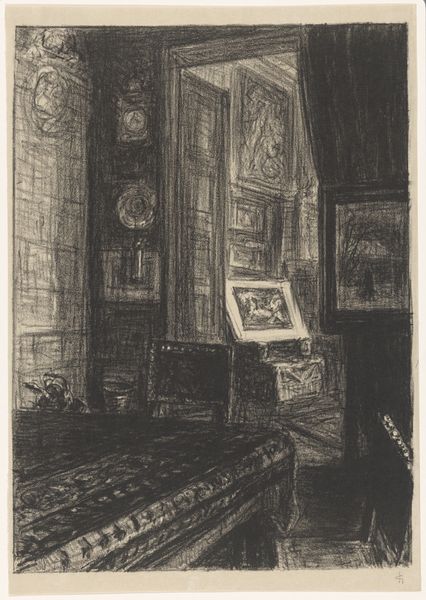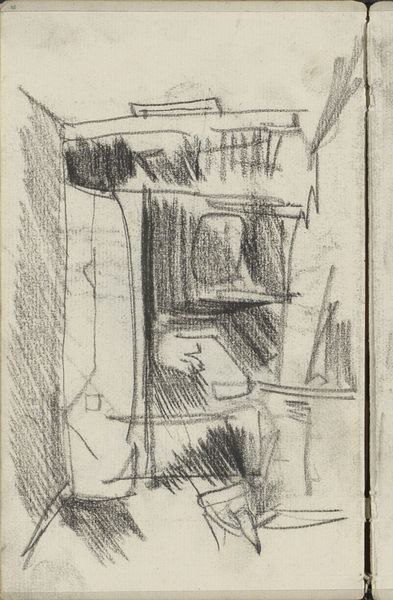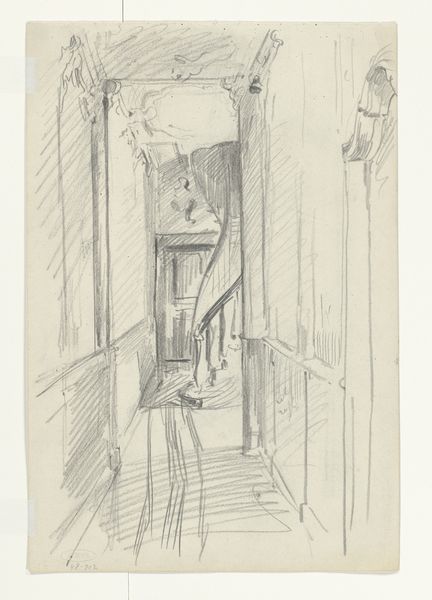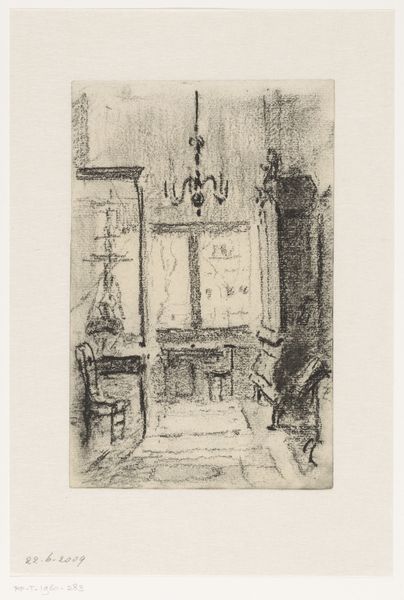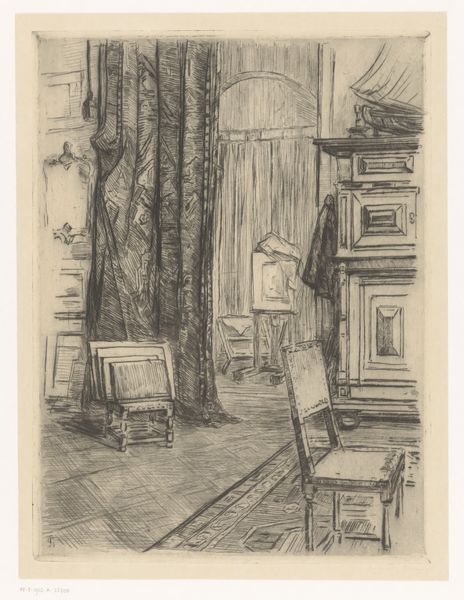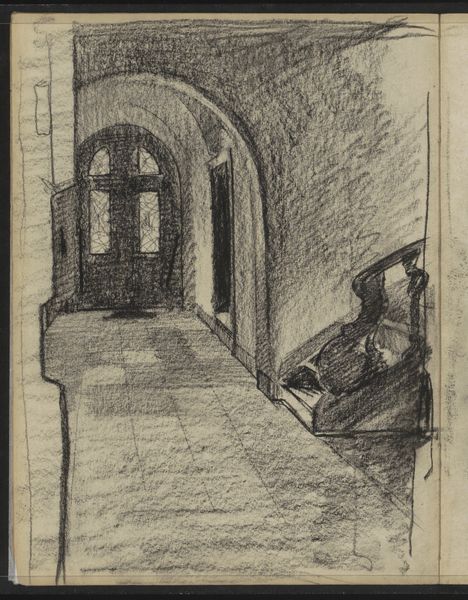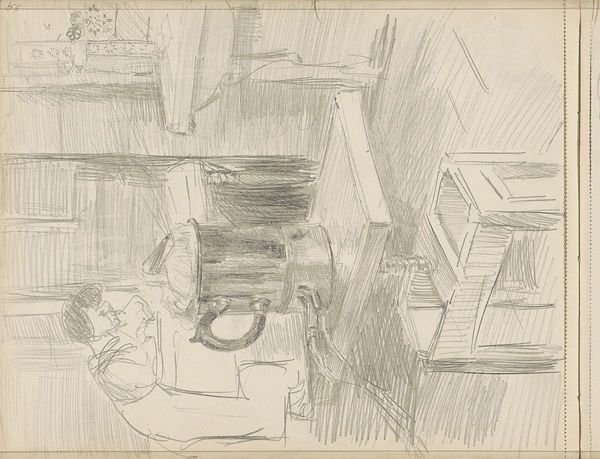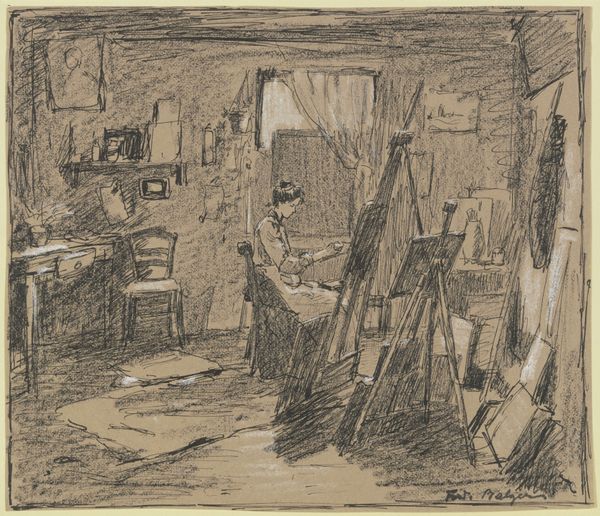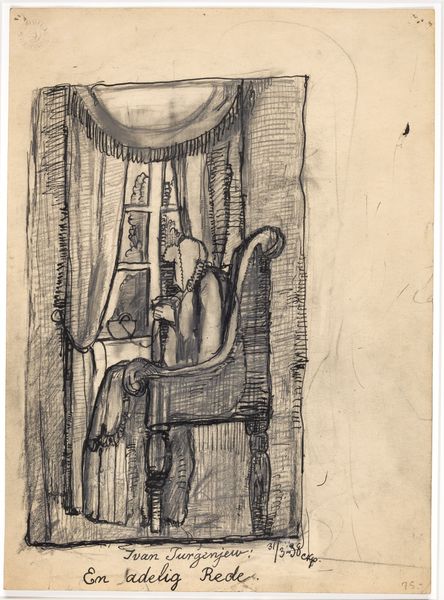
Dimensions: overall: 34.1 x 26.2 cm (13 7/16 x 10 5/16 in.)
Copyright: National Gallery of Art: CC0 1.0
Curator: This is "Das leere Café (The Empty Café)" created in 1917 by Walter Gramatté. It's rendered with graphite and pencil on paper. Editor: It feels intensely private, almost voyeuristic. The harsh light throws sharp, angular shadows that make the emptiness almost palpable. Curator: Cafés often serve as a nexus in cityscapes, and the chair symbolizes accessibility and democratic engagement. But here, that promise is completely undercut. Does that speak to something about the political climate of 1917, do you think? Editor: Absolutely. The materials, simple graphite and paper, were readily available during wartime scarcity. Perhaps this reflects a social commentary: The means to create this vision were still there, but something essential – community, abundance – was profoundly missing. Curator: The symbolic weight is definitely in the void. Note how Gramatté contrasts light and shadow. He’s creating this sense of looming emptiness using fairly straightforward mark-making techniques, which echoes the Expressionist style prevalent at the time. The absence of people magnifies the unsettling feeling, and focuses the eye instead on stark light fixtures hanging above empty chairs. Editor: The almost brutal, quick strokes really convey the feel of being quickly jotted. Not an idealized memory, but rather the captured moment. He used what he had available – it’s almost an indictment of societal lack through the artistic medium itself. Curator: I think you've captured something really insightful about this artwork and the cultural environment. A simple cafe drawing takes on much bigger meaning when one accounts for materials at hand, their manipulation, and the societal moment they exist within. Editor: Precisely. When we focus on production, the stark reality of this image amplifies and allows for different points of cultural commentary, too. A moment that, on the surface, just presents an empty cafe suddenly expands in significance when one considers materiality.
Comments
No comments
Be the first to comment and join the conversation on the ultimate creative platform.


